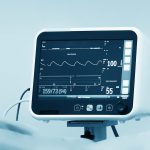We all know that EU MDR and IVDR are clinical data hungry. When the assessment shows that you need additional clinical data and while you spend time and money to collect that, with little more planning, you can increase the mileage drastically. Thinking beyond CE mark goal is important and following some of the methods discussed in this article, you will realize that it can be done cost-effectively. RWD/RWE offer bigger opportunities to device manufacturers not only to gather clinical evidence on their exiting indications but also to fulfill the post marketing obligations on the device.
Real World Data and Evidence (RWD/RWE) provide real picture of how the approved or marketed product is used by HCPs and their patients. RWD offers great potential for filling these gaps in the knowledge and help to get a better understanding of safety and performance with respect to intended use and indication of the device. Apart from this, RWD/RWE also help to get evidence related to expanded access where the device might be used of label but is being used as it shows better effectiveness in other condition. This way real word data can be used for an RWE-based approval of a new indication of the product. This area is becoming increasingly important and necessary for the device companies for their product development and commercialization including reimbursements as they are entering into EU MDR era which will be in force in May 2020.
Understanding RWD and RWE
Real World Data (RWD) is the data relating to patients’ health record, collected from a variety of sources such as electronic health record (EHR), in a hospital or insurance company’s administrative records, claims data, charts and registries. This also includes data collected directly from patients in an observational study (prospective or retrospective), from sources like patient-reported outcomes such as in-home monitoring devices, wearable devices, fitness trackers. Even product/device registries data allow assessment of medical device performance in a real-world setting. The registries contain data on large numbers of patients receiving care in diverse clinical settings and capturing the clinical outcome over an extensive period. With the implementation of UDI system, the device registries would be a great source of real world data to assess long term outcomes.
Real World Evidence (RWE) is the evidence derived from real world data (RWD) through the application of research methods. RWE can further be defined as clinical evidence regarding the use and potential benefits or risks of a medical product derived from analysis of RWD. It requires thoughtful study designs and collects the data which would fit for purpose to assess the effects of the treatments on the outcomes of interest, and an understanding of the context in which the treatments are used.
Regulatory & Clinical Aspects of RWD/RWE
As regulators and payers have started accepting the Real World Data and Evidence, the device manufacturers need to thoughtfully decide on which and what Real World Data they should be using to build the evidence to achieve regulatory objectives or clinical objectives. As far as regulatory objectives are concerned, RWE can be used effectively to expand an indication to a new population, or to a new clinically-meaningful or patient-relevant endpoint within the approved population. It could also include other label revisions that are more focused on enhancing the approved product label. On clinical side, RWE can be used to develop robust evidence safety profile of the device, better benefit-risk profile or effectiveness etc. Considering EU MDR stringent requirements, RWD/ RWE strategies can be effectively used for fulfilling post-market requirements related to safety and performance of the high risk devices.
Once the device manufacturers decide the regulatory or clinical objective which can fit into this context, they need to look at study designs and analytical methods that translate RWD into Evidence. They need to look at several aspects based on the objectives, such as population to be targeted, data to be used, treatment assignment, comparison group ( if needed), selection in interventional studies, use of prospective versus retrospective observational designs, and choice of analytical and statistical methods etc. The ability to collect required and reliable data on patient outcomes will vary by a number of characteristics related to the availability and consistency of data across sources.
As it is common in the drug industry, the device manufacturers should look into using effectively the wealth of real-world information being generated through the use of the device in a routine clinical setting for regulatory and clinical perspectives for the following key reasons:
- Helps to generate evidence on broader and deeper aspects of the device that are not typically addressed with pre-market clinical investigations such as reaching to the larger patient pool, real-world uses of products in patients with multiple co-morbidities, long-term outcomes etc.
- Opportunities to develop evidence in settings where traditional pre market investigations are impractical to conduct
- Offer better options to device manufacturers to generate evidence for new indications, label change and in support of an efficacy and safety claims that is potentially more useful to payers and patients
- Helps in reducing time and cost of evidence development for regulatory & clinical objectives
With systemic Real World strategies, this is not only a cost effective approach but it is better approach also to benefit patients with more reliable treatment options and at the same time fulfilling regulatory/EU MDR requirements.



